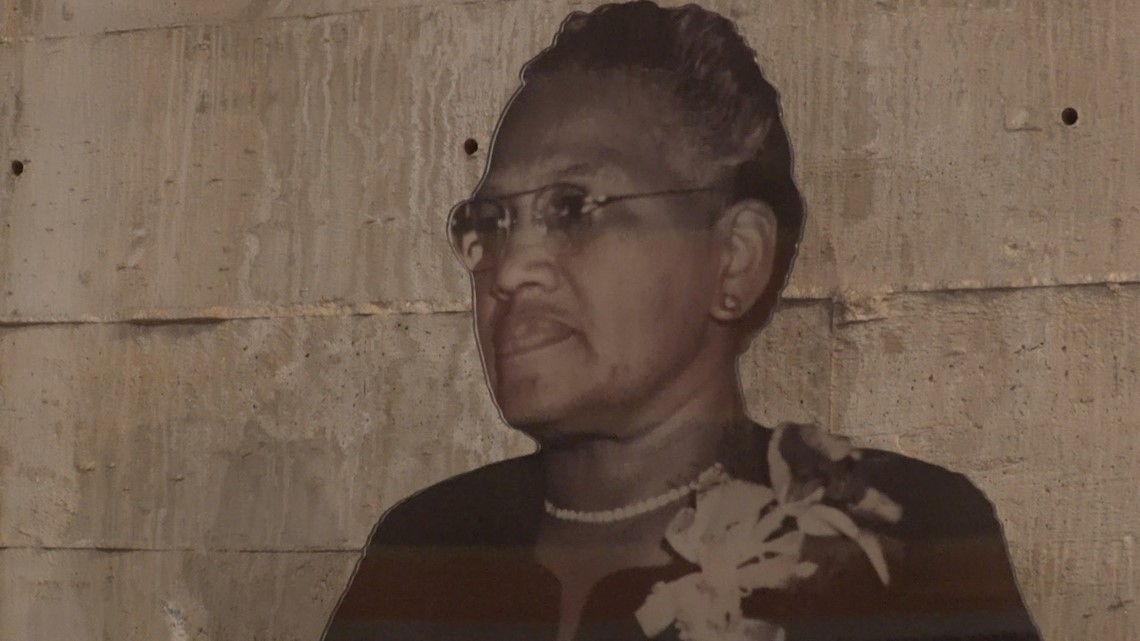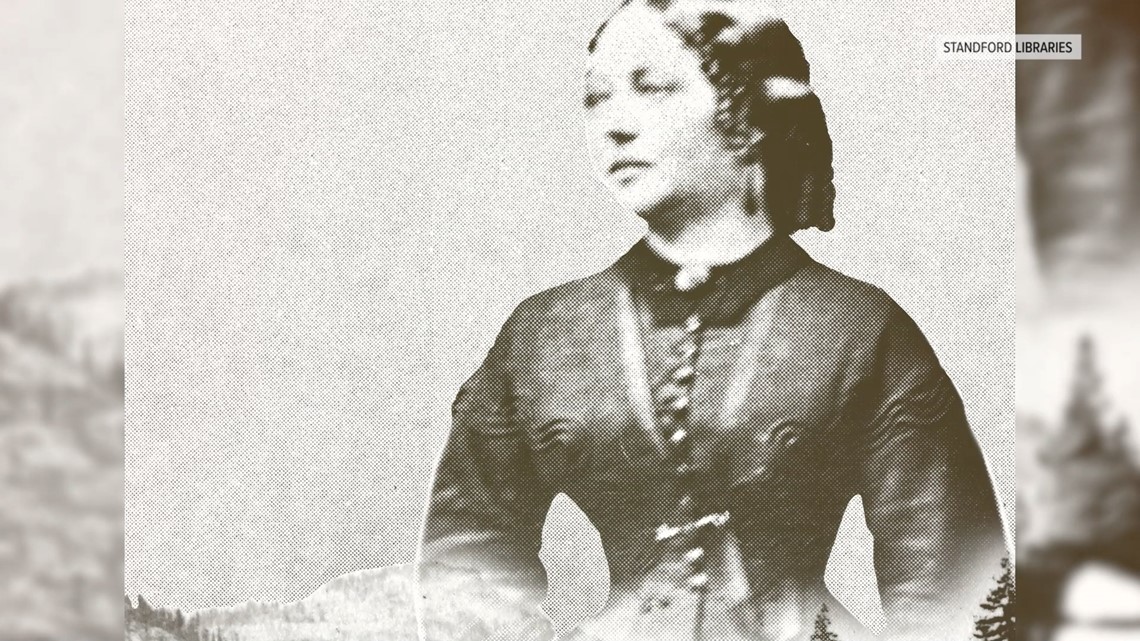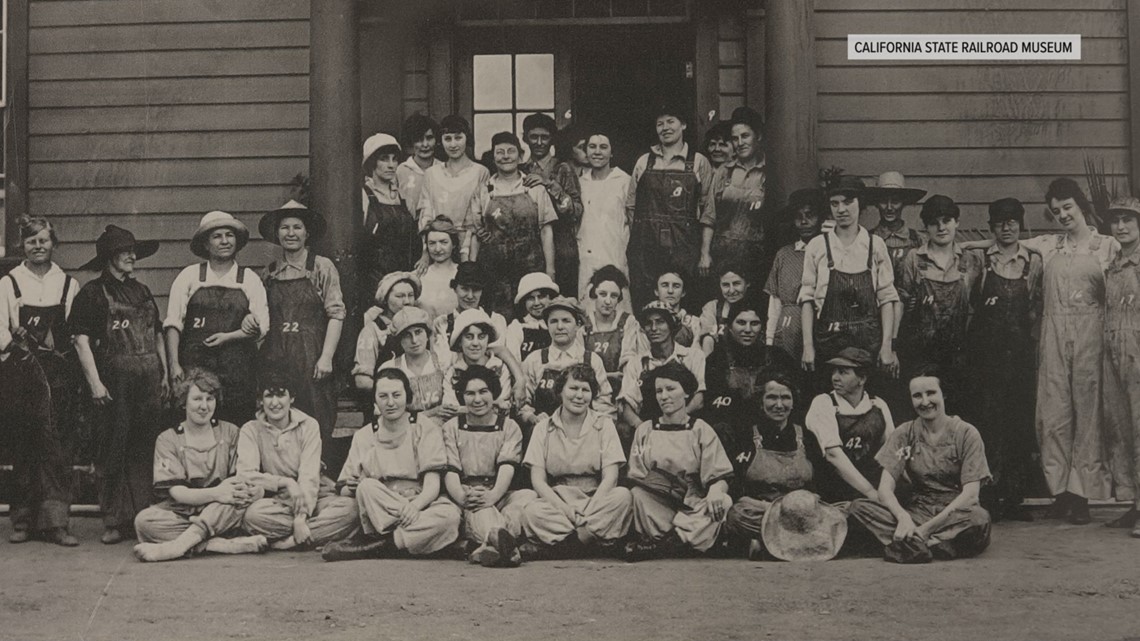SACRAMENTO, Calif. — The California State Railroad Museum was founded in 1981. Over the years it has seen its share of exhibits from the Chinese railroad workers' experience to an exhibit about toy trains — some new exhibits are even digital only.
"Railroad history runs through all of our lives, and in that respect, it is a museum of culture and history that's directly related to our lives," said Ty Smith, director of the California State Railroad Museum. "We want people to see themselves in history. There's no more diverse history than railroad history because of all of the people that were involved."
One of the exhibits that look to showcase diversity and highlight a less-known story of railroad history is called "Crossing Lines: Women of the American Railroad."
According to the exhibit's website, "Women of the American railroad crossed lines and blazed trails for future generations. They championed change and improvements, not only for the railroad industry but also for society as a whole. Enslaved African American women helped build the tracks in the South. Women explored the rugged landscape to chart routes for travel. They cleaned railroad stations and served food in restaurants. As telegraph operators, they kept trains running safely and on time. Women designed railroad stations, trains, and safer ways to travel. When men fought wars, women built and maintained the mighty locomotives that moved a nation."
The exhibit was the brainchild of Nicole Allison, who was a student at Sacramento State University that decided for her master's thesis to produce an exhibit plan. That exhibit plan then turned into "Crossing Lines: Women of the American Railroad."
ABC10 spoke with the employees at the California State Railroad Museum about the exhibit and its meaning and impact. Below is a transcript of the video story that highlights the stories of two women: Rosina Tucker and Anna Judah.
Rosina Tucker


"It's really challenging to give historic individuals who are not represented in the majority of historical literature that independent voice," said Kim Whitfield, park interpreter for the California State Railroad Museum. "Rosina Tucker wrote a fabulous book about her life. It's her autobiography, and she lived until she was 105, and she was an activist her entire life."
"Rosina Tucker had an extraordinary life," said Debbie Hollingsworth, researcher & writer with the California State Railroad Museum. "Her parents actually were enslaved. She was married for about 18 years, and her husband passed she got married a second time, and the second marriage was to a man named Bertram Tucker. He was a Pullman porter. A Pullman porter will be in charge of one car. They were luxury cars. He was in charge of everything that happened on that car and taking care of all the passengers that traveled on the car. They worked very hard for very low wages, and they wanted to be unionized but they weren't allowed in the union. But it was very tricky thing to be developing a union because any kind of union activity - I think we still see this today - if you know that you're developing a union, you're really putting your job on the line. Getting women involved in helping to create the union would be a really good way of sort of doing this in a way that wasn't very obvious. Because women can get together, they visit each other's homes, and this is exactly what Rosina Tucker did."
"For Rosina Tucker, who was highly involved in the long attempt to create a Pullman porters union," said Ty Smith, director of the California State Railroad Museum. "And it turns out to have a brotherhood of Pullman porters. You needed a sisterhood."
"She worked really hard and she worked hard at convincing the men and their wives that the best way to get their rights to be paid more, to work fewer hours is to have a union behind you to fight for your rights," said Hollingsworth.
Anna Judah


"Anna Judah in her day in the 1850s again what was expected of a woman. She came from a wealthy family. She was married to a professional man," said Hollingsworth. "What would have been expected of her at that time is to take care of the home and to get involved in charity work. She got very involved with supporting her husband and not only supporting him but accompanying him in accomplishing this dream."
"He got a job working with the Sacramento Valley Railroad, but he always had this dream for the Transcontinental Railroad. He lobbied Washington, DC. That meant that he was going from California back to Washington, DC. Yup, he went back and forth about four or five times and Anna accompanied him on all of these. She organized the paperwork, she accompanied him and the trips that he took up to the Sierra."
"She was a wonderful artist. She painted watercolors. She collected samples of the flowers there. This was all part of the presentation that Judah made to the lawmakers to get their approval. In one of the letters that I read that Theodore wrote to his wife, to Anna, and he says you know, 'I'd love it if you came up here, but you better make yourself a pair of pantaloons.'"
"So don't come in your dress, you need to wear pants but women didn't wear pants, right? So and it's not like she could just go to the store and buy a pair, she had to make herself some pantaloons and put on those boots, and then she went up to the Sierra. So she was a woman that we say was ahead of her time."
"And if it wasn't for her, would Theodore Judah have been as successful at what he did? If it wasn't for her wanting to come to California in the first place, what would that have been like? What would that have done to (what) I think about history. Would the Transcontinental Railroad have been built the way it was? Would it have been here in Sacramento? You know, I don't know, but Anna, of course, accompanied him, and that's what happened."
The impact


"So well-rounded, well-conceived, complex, nuanced story about women and the various contributions and interactions that they had with American railroading," said Smith.
"Every single one of the women in this exhibit had a huge impact on the railroad," said Whitfield. "We're talking about the history of all of these women and their impacts and I couldn't choose one of them to have the most impact because they all had great impact. I feel like history is compounding, you know, even the smallest impact of Anna Judah sorting Theodore Judah's notes to take to Congress to ask for the Transcontinental Railroad has changed the country forever.
"For me to see women here reflects myself, so now I see there are women throughout history who have made an impact and I can make that kind of impact too."



















